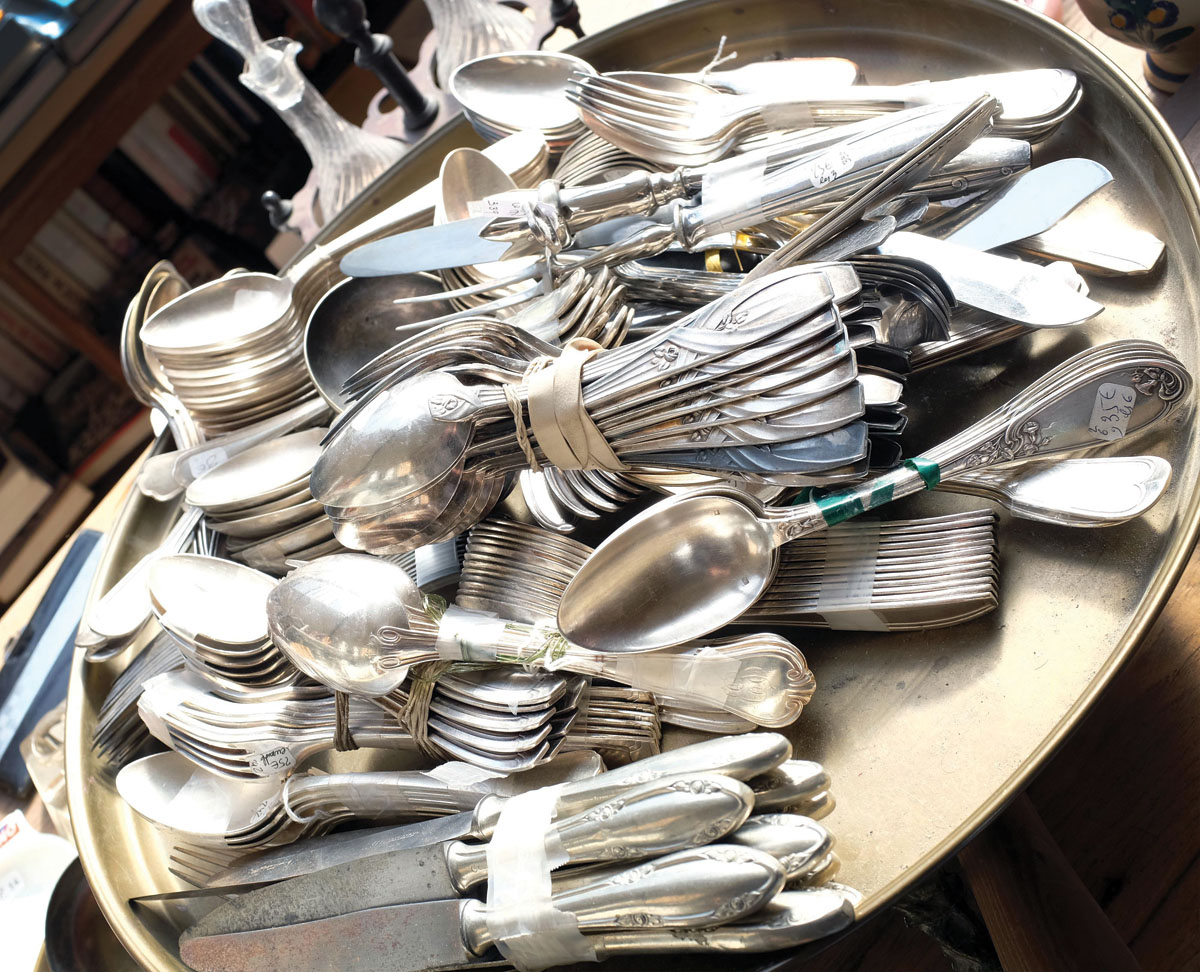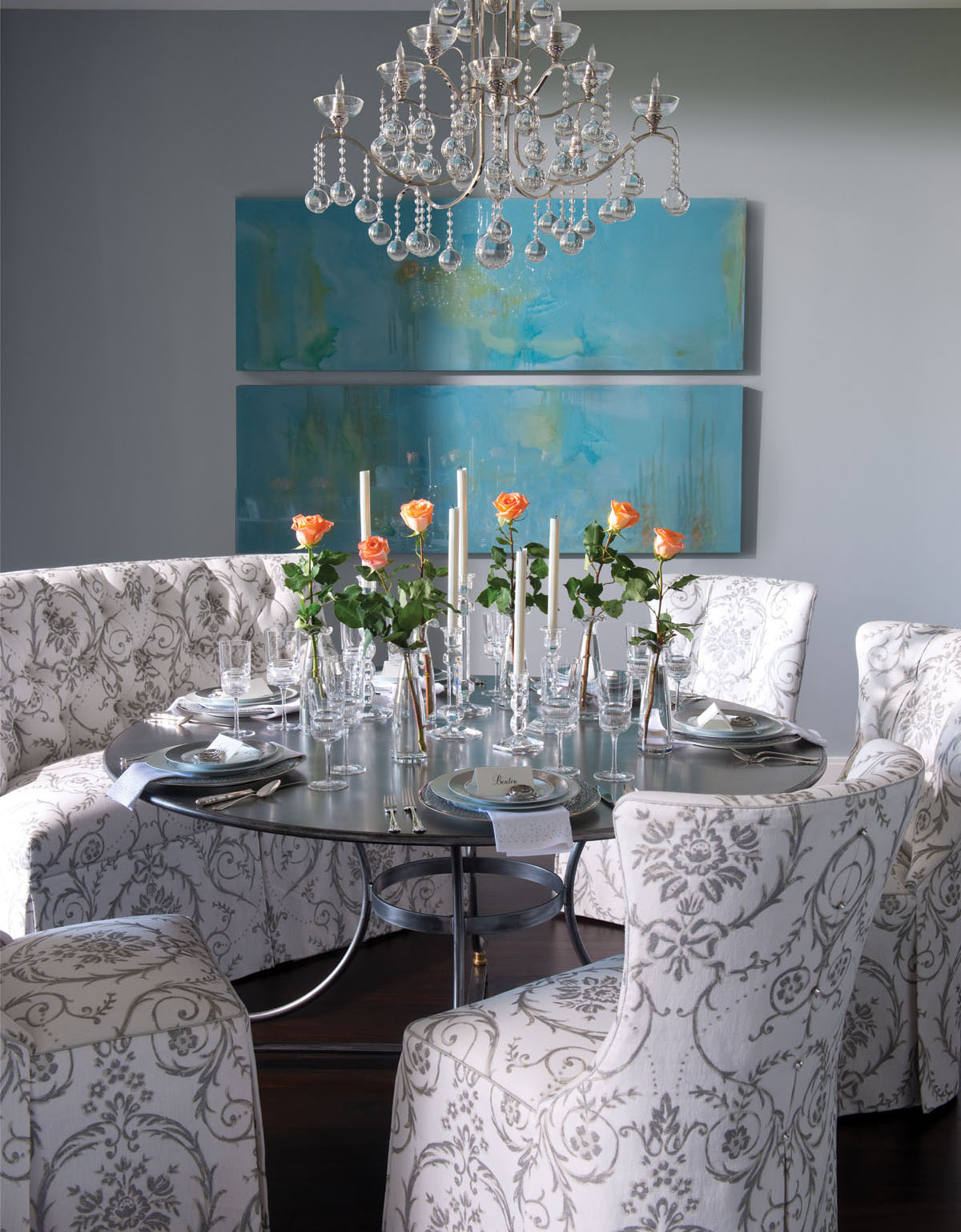The French have been a force within the decorating world ever since Louis XIV swung open the gilded gates leading to his father’s once-modest hunting lodge—refashioned into the sumptuous Château de Versailles—in the late seventeenth century. Dazzled by the splendor of the sprawling palace, aristocrats fixated on the period’s class divide, quite naturally clamored for imposing, heroic-proportioned baroque furnishings worthy of the monarchy. Enviable, richly carved throne-like chairs, tables with scrolled legs, opulent textiles and marquetry chests with ornate mounts typified the unabashedly luxe look of châteaux, manor houses, villas and mansions, where excessive proof of one’s status ruled.
Befitting living areas more unassumingly scaled than the vast, lofty spaces of Versailles, to say nothing of a less pompous way of life, the expertly crafted eighteenth-century furnishings of Louis XV, Louis XIV’s great-grandson, exhibited more restraint. Gracious curves, romantic motifs and asymmetrical silhouettes defined the less pretentious rococo movement. As salons—social gatherings of prominent, intellectually minded Parisians—became de rigueur, the privileged class sought comfortable, easily movable furnishings conducive to the art of conversation. This gave rise to the perennially popular Louis XV bergère, an upholstered armchair with closed sides outlined in an exposed, carved-wood frame. Reading stands, small writing desks and tables with flowing lines also became talking points.
A more formal aesthetic once again followed the excavation of Pompeii (1748), sparking fervor throughout Europe for antiquities that offered a glimpse of former royal splendor. Neoclassicism came to define Louis XVI style with legs on tables and chairs carved to resemble fluted classical columns. Gifted cabinetmakers enticed to France from Italy and Germany hastened the decline of gilding by favoring mahogany imported from the New World, which most elected not to embellish. (In contrast, attention-grabbing ebony was the timber of choice of seventeenth-century ébenistes magnifiques—a distinction with more than a dash of exclusivity conferred on skilled artisans.)
At the same time, the people of Provence lived simply, often lodging under the same roof as their animals while drawing their livelihoods from the land. Today this region is awash in new villas with terra-cotta tile roofs. And restored farmhouses stand amid the tumbledown barns gracing the sun-blessed countryside as outsiders lured by the area’s intrinsic charm invest locally. Yet, even as symbols of rural France fade, villagers remain true to their roots. Clinging to their quiet way of life, they savor the simple pleasures of growing vegetables and herbs, dining en famille and layering settings with comfort and ease, collectively sending an unassuming message—a value deemed just as important nowadays as in their great-grandparents’ era, when the same linen was used for fabricating curtains as for making grain and flour sacks.
But then, for some time now, gentrification has been freeing classique French furniture from its historically formal association, mostly in revived neighborhoods of the capital closest to the center of the city. (Perhaps nowhere more so than the trendy 11th arrondissement—the most densely populated district in Paris—stretching west to the fashionable Marais in the 3rd arrondissement on the Right Bank of the River Seine.) No longer content to live in the suburbs and commute to Paris—the seat of much of France’s cultural, financial and political power—waves of young professionals are migrating to the capital, where they can walk to work or rely on public transportation, sans the need to invest in a car. As a result, living spaces have become increasingly approachable.
Within the walls of regal-looking Haussmann-designed stone façades are immediately recognizable signatures of national identity that elicit admiration: finely crafted wood pieces in various finishes, splendid mirrors and grand-mère’s lovingly cared for linens. But in this age of merging sensibilities, European midcentury modern furnishings—both vintage and new—also prop settings.
Amidst abstract works of art hovering on walls, hand-rubbed painted furniture pieces mingle easily with budget-friendly finds from assorted cultures, such as wool rugs and hand-embroidered linens from India, and pottery, artisan-made pillows, throws and vintage textiles from remote markets in Morocco, which was once a French protectorate (1912–56).
Disarmingly affordable furnishings—if not reflecting one’s travels, then clearly suggesting varied interests—inevitably instill an aura of unassuming luxury in signature Gallic décor. And yet, as if by agreement, seldom do habitués stray from their unified approach to decorating, no matter in which of metropolitan France’s twenty-two administrative regions one happens to reside. Whether furnishing a château in the Loire Valley, bastide in Provence, manor house in Normandy or the ultimate retreat—a pied-à-terre in Paris—an enviable mix of passion and panache, style and resourcefulness sits behind most every imposing door. Aesthetic visions vary, of course, but when it comes to expressing beauty and taste, countless fundamentals are firmly fixed in French minds.
Perhaps much as Louis XIV intended, the Gallic art de vivre has long intrigued and influenced millions while steadily swaying markets around the globe, with significant help from social media in the past decade. Little wonder, then, that we would want to take a close look at the French ever-so-chic way with design, draw inspiration from canvases ranging from cosmopolitan to provincial, and ultimately let our creativity take flight.
—Betty Lou Phillips, ASID

In nineteenth-century Paris, men known as pécheurs de lune searched “by the light of the moon” for junk to sell at stalls set up in the city center—that is, until banished by the police to the capital’s outskirts. Some of these markets still exist today, with Clignancourt flea market being the largest.

Tailored Parsons chairs, a steel château table, Kravet’s deep, curved banquette and crystal candlesticks—a mainstay of the well-dressed table—give minimalist décor maximum impact in a condominium with an open floor plan. Further amping up this dining area’s appeal is a chic chandelier from Hector Finch, London, available through Zoffany. Fabric is Chivasso, a division of JAB. Uber-chic mixed media paintings on panels with high-gloss resin finish are by Marissa Starr.

To this day, the eighteenth century is thought to have been the most elegant era in European history, with French furniture from this period justly singled out for praise. Symbolizing good taste and wealth: a Louis XVI bergère (upholstered armchair with enclosed sides and exposed wood frame)—worthy of Marie Antoinette herself.

Sanders Studio, Dallas, striped, primed, painted and glazed—with old-world know-how—once nondescript chests, giving the pair a dramatic, more modern identity. Hollow, handblown Venetian glass lamps from Donghia rest on inset antique mirrored tops, another posh update to night tables whose height now matches the mattress’s pillow top. Empress Eugénie, wife of Napoléon III, prompted the fashion for lace-edged bed linens. The town of Calais, on the shores of the North Sea, is the lace capital of France, though Chantilly and Valenciennes are also famous centers.